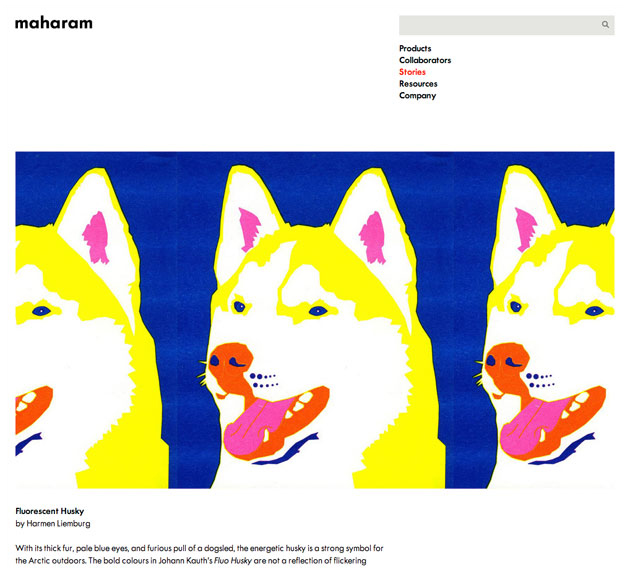One By One
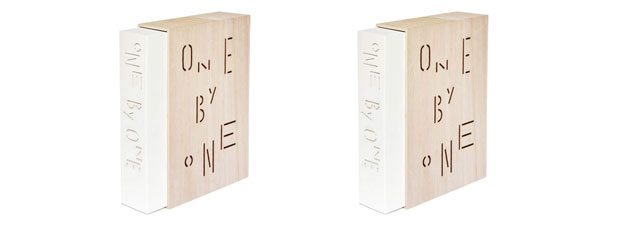
“47 Countries, 477 Designers, 3477 Pieces of Work, 1 Contemporary world of Graphic Design.”
Work featured in One by One, edited and designed by Hesign.
.Periods
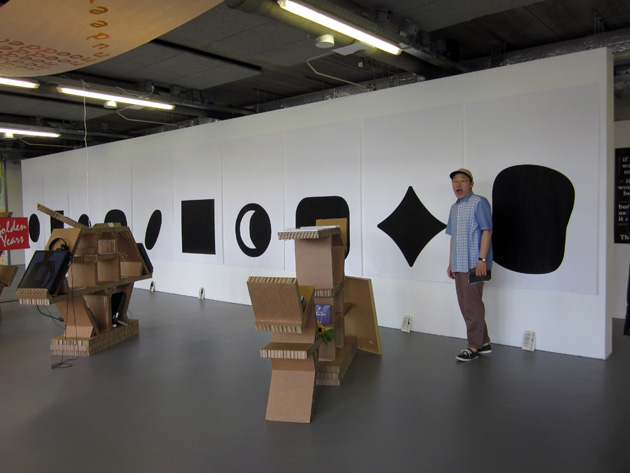
For his graduation project, Keun Pyo Ahn made a series gigantic ‘periods’ of various typefaces, that were printed at at Gerrit Rietveld Academie shop for screenprinting on paper.
Marble Billboard
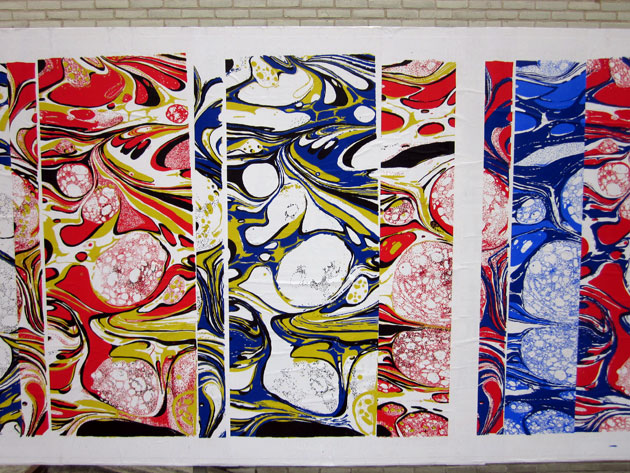
Drawings: Nina Paim, graduation student at the Gerrit Rietveld Academie Graphic Design Dept.
Printing & billboard compilation: Nina Paim & Harmen Liemburg
New Graphic Magazine
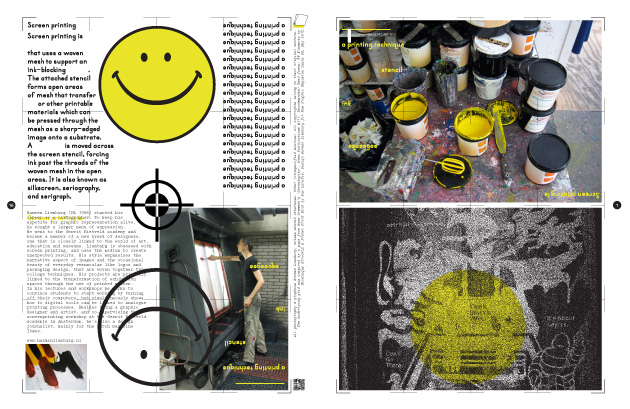
Contribution made for New Graphic Magazine (China) about recent projects and process.
Text & Design Harmen Liemburg
Everything looked promising but the magazine was mysteriously discontinued summer 2012 for reasons unknown to me.
Some of the pages were later used for publication in Add Magazine, Fall 2012.
Seaweed Mayo Business
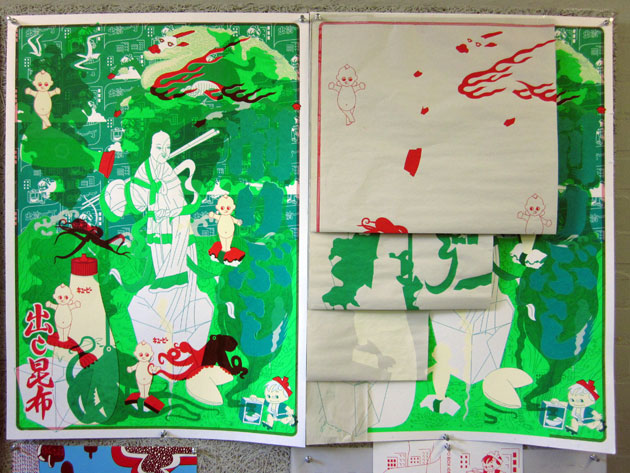
Seaweed Mayo
2012
Uncut printing sheet H 70 x W 50 cm
4 colour screenprint on 300 grams/m2 Hahnemüller
20 sheets to be cut in cards of various sizes
Remake of 200 Grams, a print previously made for Oomen architecten, split up (on the right) to illustrate the stages of the printing process at GRA screenprinting shop.
Speed Is What We Need
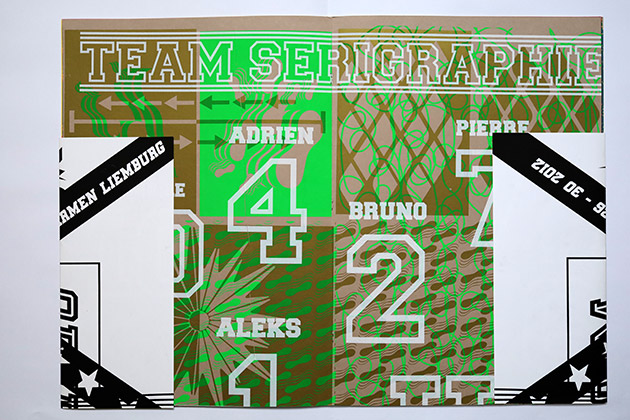
Speed Is What We Need
Workshop at Institut Supèrieur des Beaux Arts de Besançon (ISBA), March 25-30, 2012.
OTIS at Rietveld
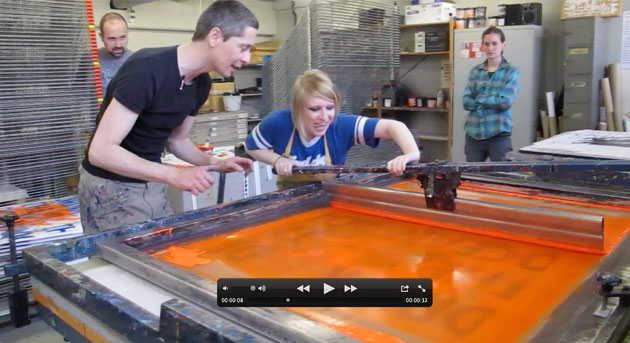
Printing a 2 colour poster during a fun one-day-workshop with a group of MFA students from Los Angeles’ OTIS College of Art and Design at the Gerrit Rietveld Academie screenprinting shop for paper.
This collective piece was previously made together during a intense two weeks of Dutch art, culture and design, organised by COMA.
Nederlands Steendrukmuseum
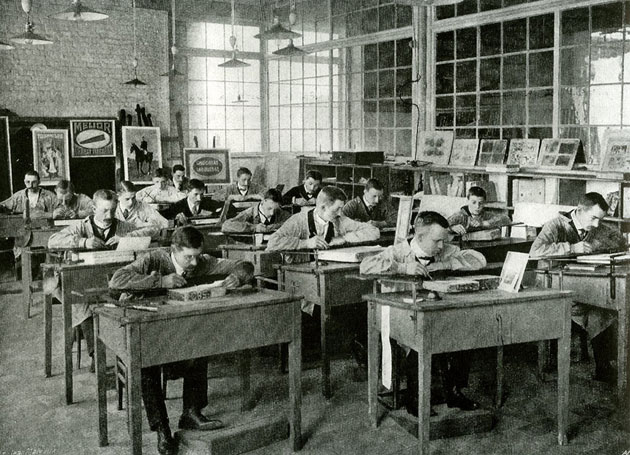
Lithographers at work, around 1890. Image from Het Nederlands Steendrukmuseum.
Text Harmen Liemburg (in Dutch) for Items Magazine 1/2012.
Kleur in het alledaagse leven
Vanaf de uitvinding van de machinale produktie van papier en het drukken door middel van losse letters rond 1400, werd voor de produktie van drukwerk voor bijna 400 jaar overwegend gebruik gemaakt van hoog- en diepdruk. In 1796 komt daar verandering in als de 25 jarige Aloys Senefelder, zoekend naar een manier om teksten voor een toneelstuk in eigen beheer te vermenigvuldigen, de ‘chemische drukkerij’ ofwel de vlakdruk ontdekt.

